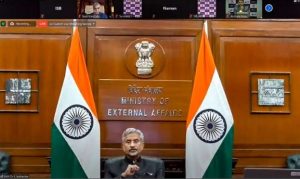Even as the 10-member ASEAN bloc has signed the Regional Comprehensive Economic Partnership (RCEP) with five economies led by China, India is going to follow the policy of wait and watch till the new US presidency assumes office.
After eight years of hard negotiations, ASEAN (comprising Brunei, Cambodia, Indonesia, Laos, Malaysia, Myanmar, the Philippines, Singapore, Thailand and Vietnam) signed the trade pact with five of its FTA partners — China, Japan, South Korea, Australia and New Zealand — on Sunday.

The pact aims to reduce cost and time for traders of all the member states by lowering tariffs and waiving off requirements to export their products in a hassle-free manner anywhere within the bloc. RCEP’s members account for around 30 per cent of global GDP. The agreement is likely to come into effect next year.
India was to be a member too but it withdrew in November last year after RCEP did not address satisfactorily its outstanding issues. Although India can join the RCEP in future, but so far the government is not rethinking its decision, sources told IANS.
“The Centre will wait and watch the new US presidency’s approach towards China,” a source said.
The Congress-led opposition has been critical of the Modi government’s backing out from the largest trading arrangement in the Asia-Pacific region. In a couple of tweets, former Finance Minister P. Chidambaram had said that there are pros and cons to India joining RCEP.
“But the debate has never taken place in Parliament or among the people or involving the opposition parties. It is another bad example of centralised decision-making unacceptable in a democracy,” he said.
Critics believe that India’s withdrawal from RCEP strengthened China’s geopolitical position in the region.
The conversation, according to Samir Saran, president of Asia’s most influential think-tank, ORF, “has been uninformed”.
Nearly all member countries have a trade deal that predate RCEP, he said pointing out that India has deals with ASEAN, Japan and Korea and will strengthen them. But India has none with China.
“Signing up now amounts to India rewarding China the champion of trade perversion,” he said.
Arguing that RCEP is dominated by China, JNU professor Srikanth Kondapalli told IANS that Beijing would like India to open up through this route.
“But we have trade deficits with 11 out of 15 members of RCEP. Heavens won’t fall if we don’t join it. Most of them are protectionist to our exports. Non-tariff barriers, currency manipulation, changes in customs duties, ratchet provisions on investments, goods of origin, equity, livelihood issues are crucial for us,” he said.
The concern is not merely trade deficit, but also the fact that due to the existing trade agreements, cheap imports from China have crushed the domestic industry which is year after year finding it harder to compete.
The decision to pull out from RCEP was well-thought out and arrived at after having considered several factors, including ballooning trade deficit with member states, said former diplomat Rajiv Bhatia, a distinguished fellow at Mumbai-based think-tank, Gateway House.
However, nothing is permanent in international relations. “We are in a transition period. The contours of our foreign policy will emerge once the new presidency takes over in the US and its approach towards China becomes clear. India will use a calibrated strategy, taking into account China’s trade practices which manipulate competitive markets and also its ongoing aggression along the Line of Actual Control in Ladakh,” he added.
Adding an important dimension to the RCEP, a senior fellow for Washington based Southeast Asia, Greg Poling, said in a tweet that RCEP is ASEAN-led, not China-led (otherwise Japan wouldn’t be in it).
“And it isn’t China’s plan for regional economic dominance. BRI is. Second, RCEP will have a marginal impact on trade, especially without India. Most members already have equal or better deals with each other,” he tweeted.